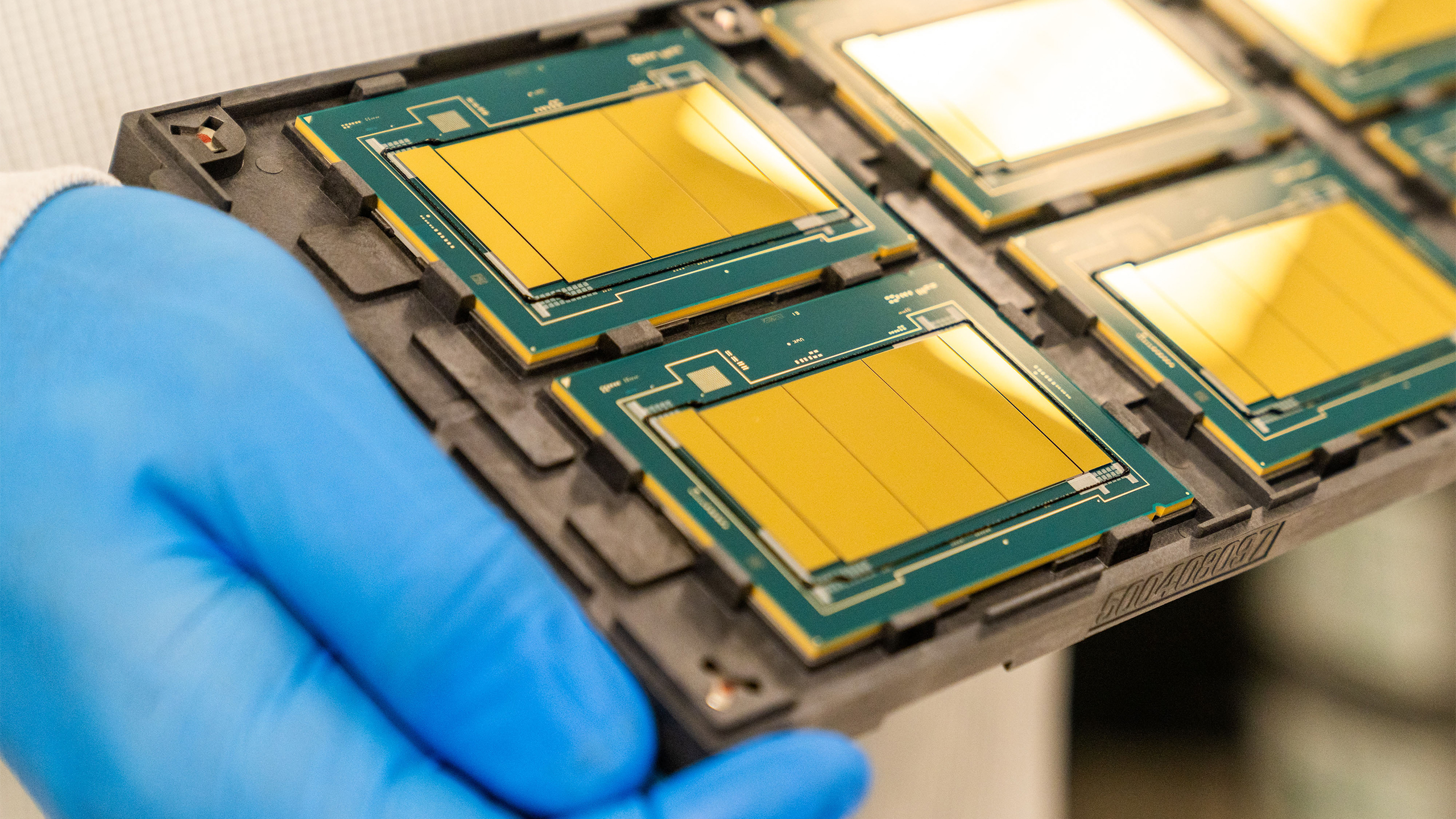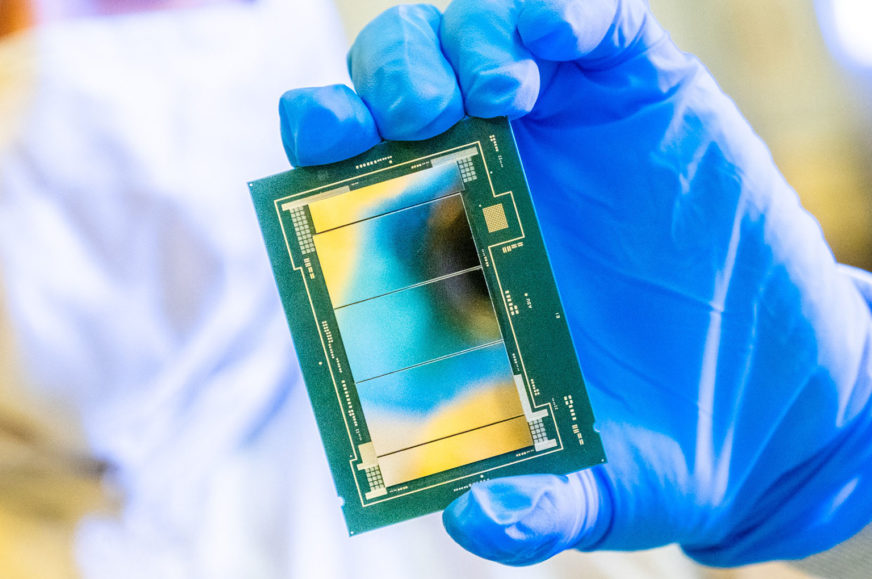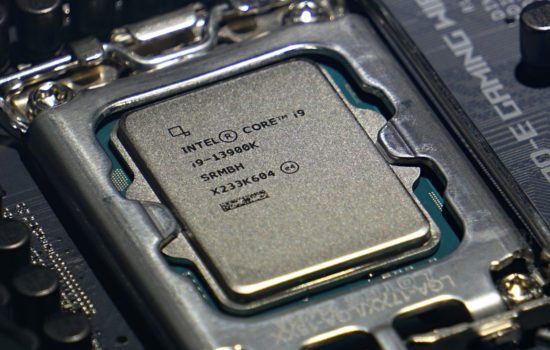Xeon 6 a.k.a. Granite Rapids
We recently mused that Intel could catch up, if not overtake AMD in iGPU performance, but now there’s information suggesting upcoming Intel Xeon processors could close the gap with AMD in servers. In fact, the “Granite Rapids” processors appear to eliminate AMD Epyc processors’ long-standing lead in core count and will bring as many as 128 cores. However, these will probably use the not-so-successful Meteor Lake microarchitecture…
Intel, feeling pressure from AMD, is making more of its future products roadmaps public lately, which is how we know that the current 64-core Emerald Rapids Xeons (officially 5th generation Xeon Scalable), is getting a quick follow-up with a new generation labelled Granite Rapids, which will be manufactured using a 3nm node (Intel 3).
Intel has now opened up a bit about it at the Vision 2024 conference, where the company also revealed the Gaudi 3 AI accelerator and Meteor Lake socket processors for LGA 1851 boards (only for the IoT sector, not PCs). The company said it will simplify the current complicated naming scheme and this next generation of Granite Rapids will be called simply “Xeon 6“.
But what will Xeon 6 bring? Leaked data about these processors has now also appeared on the web, which shows that the maximum number of cores will apparently be up to 128, the same as the newer Epyc 9704 “Bergamo” (with 128 Zen 4c cores). However, Intel is preparing two versions, the first called Granite Rapids-SP and the second called Granite Rapids-AP. They will apparently differ in the number of compute chiplets they will integrate in the package.
Granite Rapids-SP
The simpler version, Granite Rapids-SP uses the LGA 4710 socket and the Beechnut City reference platform. There are currently known samples of processors that have 32, 44 and 56 cores (and double the thread count through HT), but it is possible that a 64-core configuration can be built too if all the cores in the chiplets are enabled.
The TDP can be up to 350 W and the processors contain up to 288 MB of L3 cache, but that’s probably the value for a 56-core model. Processors for LGA 4710 socket will use eight-channel DDR5 memory and up to 136 PCI Express 5.0 lanes.

Granite Rapids-AP
When Intel first used the AP (Advanced Performance) designation, it was about gluing together two 14nm Cascade Lake Xeons in one big package. Granite Rapids-AP also doubles the number of cores, but apparently it will be done differently and will not be simply two Granite Rapids-SP units glued together. Since these are chiplet processors, there will probably simply be more CPU chiplets in the package. But probably with some extra IO chiplets as well.
Granite Rapids also provides 136 PCI Express 5.0 lanes, but will utilize 12-channel DDR5 memory, so it needs the different LGA 7592 socket (the number should indicate the number of pins/contacts). The number of contacts is so high also because of the power supply, as the TDP of these CPUs can be up to 500W.
To date, samples of these processors with 72, 96, 120 and 128 cores are known. These CPUs still have HT enabled, so the number of threads is double (up to 256). It is not known how big their caches will be, the L3 capacity per core could probably be higher than with the SP versions proportionally to the number of cores.

Sierra Forest: E-Cors in servers
In parallel, Intel will offer Xeons 6 based on a separate Sierra Forest design, which replaces P-Cores with E-Cores (probably of the Crestmont architecture?). Again, there will be Sierra Forest-SP processors apparently for the LGA 4710 socket, which have up to 144 cores/threads with 108MB L3 cache and 350W TDP.
But there will also be a Sierra Forest-AP version for the big LGA 7592 socket, which will offer up to double that with 288 E-Cores / 288 threads. It will probably also have 12-channel memory and TDP up to 500 W. Motherboards should support both Sierra Forest and Granite Rapids processors, so servers will be able to choose what to use (and possibly be upgraded/downgraded between P-Core and E-Core versions in the field).

E-Core Xeon 6 will come out first
According to Intel, the Sierra Forest Xeons 6 with E-Cores should be out this quarter, while the Granite Rapids version with P-Cores will be out later, sometime in the second half of 2024.
Intel will catch up in core count, but will probably fall behind in architecture
The number of cores is one thing, but the performance of those cores is another. According to leaks, Sapphire Rapids is supposed to use the Redwood Cove architecture, which is the same core as the P-Cores in 4nm Meteor Lake processors. However, it will probably have full-throughput 512-bit AVX-512 support and AMX instructions added in.
This will help, but the base Redwood Cove core, despite the increased 64KB L1 instruction cache, does not show better IPC in benchmarks (and has worse clock speeds) than the older Golden Cove/Raptor Cove core that are now in Sapphire Rapids and Emerald Rapids Xeons.
This suggests that the Xeon 6 “Granite Rapids” may not get any performance boost directly from the core architecture. If there are architectural improvements, they will probably have to come from improved the L3 cache, core interconnect, I/O and memory controller. But there is a real possibility that the resulting performance increases will stem purely from higher core counts and possibly from better power efficiency of the 3nm node.
However, AMD is set to launch the Epyc 9005 “Turin” with Zen 5 cores this year, and quite possibly also a version with a higher number of Zen 5c cores. And Zen 5 microarchitecture is expected to deliver a big improvement in IPC (better performance per 1 MHz).
Read more: Can Zen 5 increase performance per core by up to 40% compared to Zen 4?
Granite Rapids could end up with single-core performance rivaling only the older generation of Epyc with Zen 4 architecture, while AMD will already have the much more powerful Zen 5 out. So, just because Intel has matched AMD’s pace in core count doesn’t mean AMD won’t continue to be ahead in absolute server processor performance.
According to the latest information, the Epyc 9005 could have 96 Zen 5 cores, but versions with compact Zen 5c cores could go up to 160 cores (whether there will eventually be a 192-core version remains to be seen; such configuration could be made in theory but is not confirmed). Their TDP is said to be 400W, but it’s possible it could be optionally increased.
Sources: YuuKi_AnS (1, 2, 3, 4), WCCFtech (1, 2)
English translation and edit by Jozef Dudáš
⠀
- Contents
- Xeon 6 a.k.a. Granite Rapids











